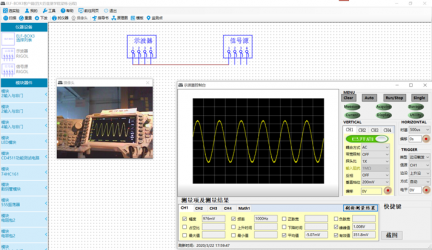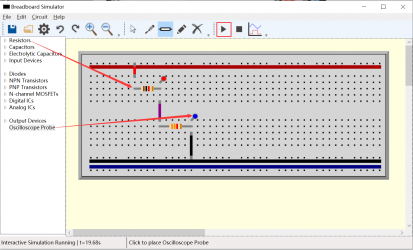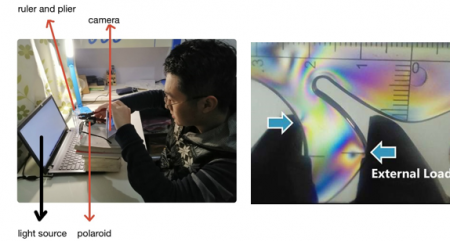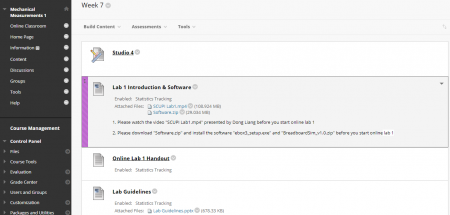SCUPI Continues to Provide Students with Experimental Teaching and Learning during the Epidemic
Published on: April 16, 2020 | Views: 4672
With the outbreak of the COVID-19 coronavirus epidemic, many universities across China are putting classes online to ensure the continuity of education. But for practical education, since students cannot go to the laboratory in person, how can the quality of experimental teaching be guaranteed? In this regard, the SCUPI lab teaching team has carried out experimental teaching smoothly by the utilization of the following applications and measures: remote control platforms, virtual simulation software, pocket lab projects and the integration of various teaching resources.
1. Virtual Simulation in Mechanical Measurement
“Mechanical Measurement I” is a featured lab course of the Mechanical Engineering major at SCUPI. One experimental project connected to it is “Introduction to Instrumentation and Data Acquisition”. However, since students remain at home, they have no access to lab instruments. To solve this problem, the SCUPI lab teaching team has quickly transferred this experiment into a virtual simulation experiment under a tight schedule. By the introduction of the virtual simulation software and remote-control platforms, such as Breadboard_Sim, Scope V1.46 and ELF-BOX3, students are able to build experimental circuits online, remotely control and observe lab instruments and obtain real-time data. Therefore, students can accomplish the experiments at home without any extra cost.
 Fig 1. Remotely controlling the function generator and oscilloscope on the ELF-BOX3 platform to collect and measure sinusoidal signals
Fig 1. Remotely controlling the function generator and oscilloscope on the ELF-BOX3 platform to collect and measure sinusoidal signals

Fig 2. Building a virtual simulation circuit on Breadboard_Sim to measure the voltage and current
“I never thought that I could control experimental equipment at home. But after the first practice, I found the operation very simple and convenient, and the online questions answered by the teaching assistant was very detailed and informative. During the experiment, not only can I intuitively see the signal displayed by the oscilloscope, but also personally experience the wiring and operation of the circuit. These unprecedented experiences have surprised me.”
– Yukai Gu, ME Student
2. The “Pocket Lab” Experiment in Material Science
As for the Material Science lab course, “Structure & Properties Laboratory”, the lab teaching team has adjusted and optimized this course in the following aspects: teaching methodology, experimental content, operation procedures and evaluation methods. The team has launched a series of “pocket lab” projects, which allow students to use cheap and easy-access objects to execute the experiments at home. Currently, the experiments of “Ball Model of Single Crystal Cubic Crystal Structures” and “Photoelasticity and 2D Stress Mapping” have been accomplished. These fun-filled experiments substantiated the theoretical knowledge of students, allowing them to intuitively feel the charm of Materials Science. Among them, the experimental results of some students were selected to display as excellent examples of the online teaching platform.

Fig 3. A student conducting a material photoelastic stress experiment
“Although we cannot go to the laboratory during the epidemic, under the arrangement of the Institute, we can successfully do some small experiments at home and exercise our hands-on ability. In the experiment of “Photoelasticity and 2D Stress Mapping”, for example, the process was a bit difficult, but I was very excited to see a perfect result in the end. In short, even if we do experiments at home, we try our best to complete them.”
– Yu Liu, MSE Student
3. Embracement of Multiple Teaching Technology and Recourses
In addition to the innovative measures of experimental teaching, the instructors, laboratory engineers and teaching assistants have been cooperating closely throughout the teaching process. Their teamwork focuses on the comprehensive use of live broadcasting, recording, online question answering, feedback collection and readjusting the teaching plan. They have established a highly efficient teaching process and timely question-answering mechanisms, so as to secure that teaching is not compromised in theory or practice, and thus to deliver the best practical experience to students.

Fig 4. Lab teaching content on Blackboard from the viewpoint of a student
SCUPI has always put a high value on practical teaching. Even in this special period of the epidemic, SCUPI has also ensured high-quality practical teaching, by embracing these new teaching methods and new technologies. In this way, SCUPI is creating a seamless connection of teaching between now and when students return to campus.
